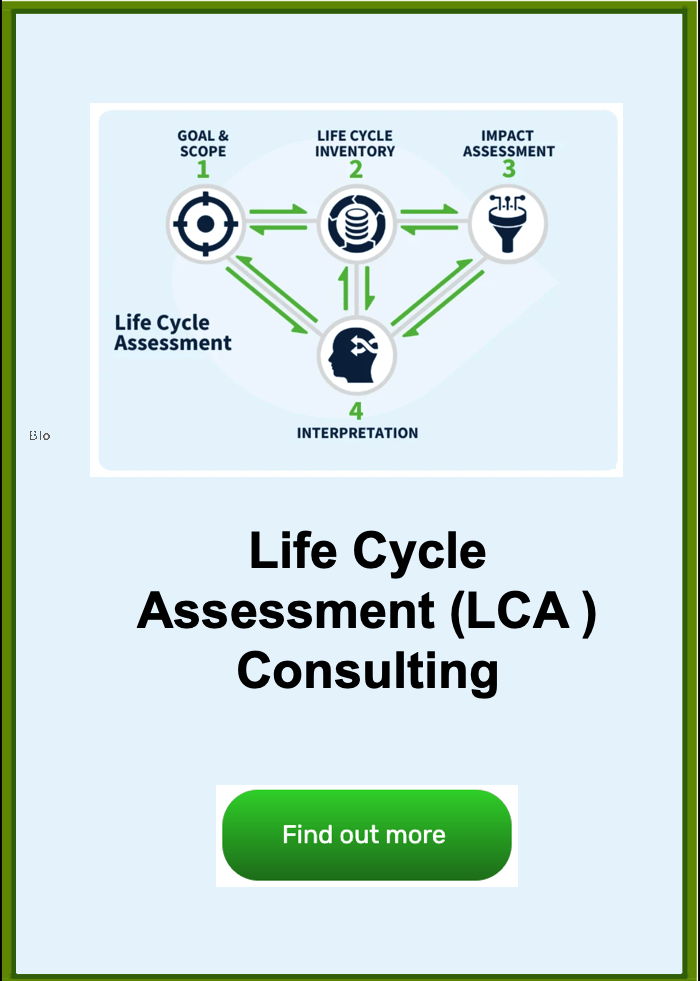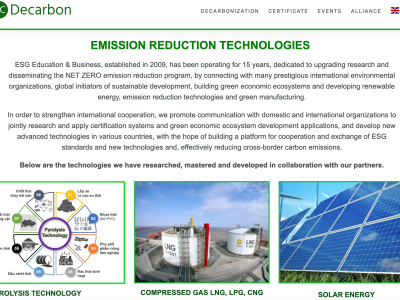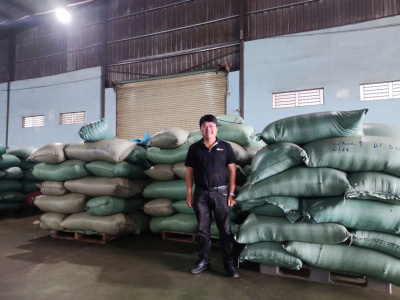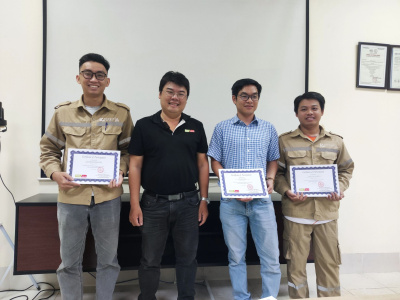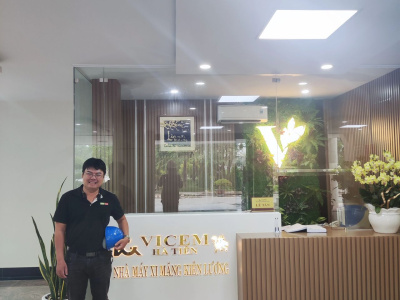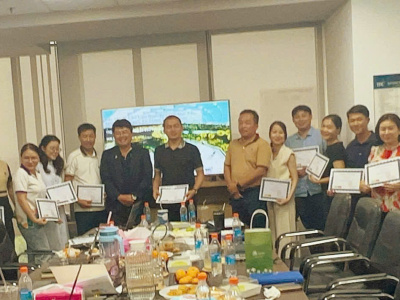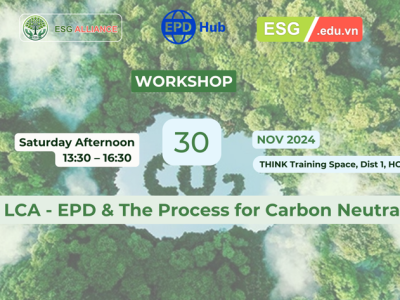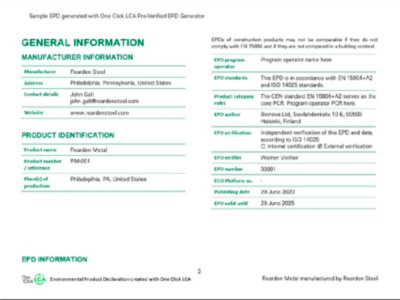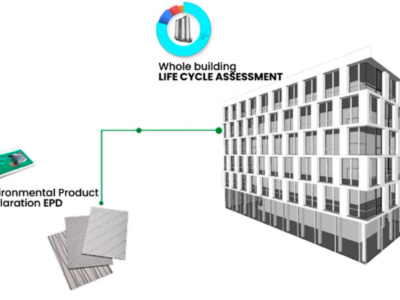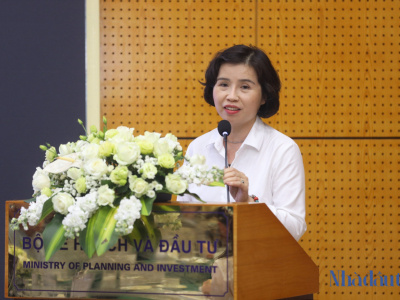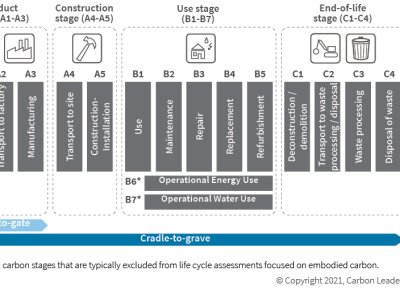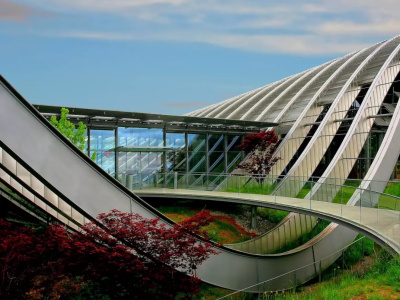SMART ENERGY MANAGEMENT
NHỮNG THỬ THÁCH KHẨN CẤP CỦA VIỆT NAM VÀ THẾ GIỚI
Green Growth in Ho Chi Minh City: Exploring the Potential of Agrivoltaics
Abstract: This paper presents the role of agrivoltaic systems in promoting green growth in Ho Chi Minh City. By integrating solar power generation with existing agricultural practices, agrivoltaics has shown potential to enhance energy efficiency, food production, and water use, while contributing to a sustainable urban future.
Keywords: Ho Chi Minh City, Green Growth, Agrivoltaics/Agrophotovoltaics, Sustainability, Renewable Energy, Urbanization, Agriculture.
Introduction
Ho Chi Minh City, an emerging economic powerhouse and the largest city in Vietnam, finds itself at a crossroads in its trajectory of growth and development. As the city continues to expand at an unprecedented pace, sustainability has emerged as a critical issue in its development narrative.
At the heart of this challenge are two interconnected problems: an escalating demand for energy and mounting pressure on agricultural lands. This complex issue can be attributed to several factors. First and foremost, rapid urbanization, characterized by a substantial increase in population and urban density, has led to an exponential growth in energy consumption. This increasing demand for energy is further heightened by the city’s expanding industrial and commercial sectors that form the backbone of its economy.
Simultaneously, the city’s rapid urban expansion has put a strain on agricultural lands. As more land is requisitioned for infrastructure development, the city’s agricultural hinterlands are shrinking. This has two major implications: it threatens the city’s food security and compromises the livelihoods of those who depend on agriculture.
In the face of these pressing challenges, it is becoming increasingly apparent that the conventional strategies of urban development are not sustainable in the long run. Innovative and sustainable solutions are needed, and it is in this context that green growth strategies are gaining traction.
Green growth strategies represent an integrated approach to city planning and development that seeks to harmonize economic growth with environmental sustainability. These strategies advocate for development models that reduce environmental degradation, enhance resource efficiency, and promote economic prosperity.
Among these strategies, agrivoltaics emerges as an innovative and promising solution. Agrivoltaics combines agriculture and photovoltaics, the conversion of light into electricity using semiconducting materials, to optimize land usage. By installing solar panels over agricultural lands, agrivoltaics systems can generate clean energy while simultaneously enhancing agricultural productivity.
This dual function of agrivoltaics – enhancing agricultural yield and generating renewable energy – offers a potential solution to the city’s sustainability challenges. In the subsequent sections of this paper, we delve deeper into the concept of agrivoltaics, its potential for green growth in Ho Chi Minh City, and the policy recommendations for its successful implementation.
Green Growth: A Paradigm Shift Towards Sustainable Development
Green growth encapsulates a revolutionary shift in economic planning and developmental thinking. It underlines the need to balance economic growth with the principles of environmental sustainability, urging for a model of development that mitigates environmental risks while optimizing the utilization of resources. This paradigm shift is driven by an acknowledgment of the finite nature of resources and the pressing need to ensure their sustainable use for the wellbeing of future generations.
In the context of Ho Chi Minh City, green growth isn’t just a theoretical concept, but an imperative for sustainable development. The city’s traditional development patterns, heavily reliant on intensive resource exploitation and rapid urbanization, have begun to reach a plateau, with diminishing returns becoming increasingly evident. This is manifested in the form of environmental degradation, from air and water pollution to the depletion of green spaces, and resource scarcity, particularly noticeable in the energy and agricultural sectors.
The adoption of the green growth model in Ho Chi Minh City entails a significant overhaul in the way urban planning, resource management, and economic policies are implemented. This approach places emphasis on preserving ecological balance, reducing carbon emissions, enhancing resource efficiency, and most importantly, integrating these principles within the economic development framework of the city.
A key element in the green growth strategy for Ho Chi Minh City is agrivoltaics – a symbiotic system that marries agriculture and photovoltaics, which is the conversion of sunlight into electricity through semiconducting materials. The principle behind agrivoltaics is to optimize land usage by creating a dual-purpose system: energy generation and food production.

Agrivoltaic systems achieve this by installing solar panels over agricultural lands. These panels not only generate clean, renewable energy but also provide much- needed shade for certain crops, thereby reducing evapotranspiration – the process by which water is transferred from the land to the atmosphere by evaporation from the soil and other surfaces and by transpiration from plants.
The implication of this setup is twofold. First, it enables an increase in crop yields as certain crops benefit from the shade provided by the panels and the reduction in evapotranspiration. Second, it improves water efficiency, as less water is lost to evaporation under the solar panels, a crucial benefit in regions prone to water scarcity.
Through this innovative combination, agrivoltaics can address two critical issues in Ho Chi Minh City: the increasing demand for clean energy and the need for sustainable agricultural practices. Thus, the integration of agrivoltaics into the city’s green growth strategy offers a path towards a more sustainable and resilient future.
The Potential of Agrivoltaics in Ho Chi Minh City: Unleashing Synergies
In the quest for sustainable urban development, Ho Chi Minh City finds a promising solution in the application of agrivoltaics. This potential primarily stems from the unique geographical, climatic, and socio-cultural characteristics of the city and its surrounding regions.
Situated in a tropical zone, Ho Chi Minh City is endowed with a climate typified by high temperatures and considerable precipitation, creating an environment conducive to year-round agriculture. Moreover, the city experiences high solar irradiance levels, an important determinant for effective photovoltaic energy generation. This confluence of favourable conditions for both agriculture and solar energy generation forms the basis for the feasibility of agrivoltaics in the city.
Furthermore, the city’s rural periphery, with a deep-rooted tradition of agriculture, holds great promise for the establishment of agrivoltaic systems. The rural farmers, skilled in traditional agricultural practices, can become custodians of this novel technology, thereby creating a harmonious blend of heritage and innovation. The implementation of agrivoltaics in these regions can trigger a cascade of socio- economic benefits. Not only can it boost rural development by creating job opportunities and augmenting farmers’ income, but it can also help bridge the urban- rural divide by contributing to a balanced regional development.
The incorporation of agrivoltaics into the city’s energy and agricultural landscape promises significant strides towards the city’s green growth ambitions. By establishing a locally-sourced, renewable energy stream, agrivoltaics can diminish the city’s dependence on fossil fuels. This
shift towards a low-carbon energy source is instrumental in reducing greenhouse gas emissions, aligning with the city’s commitment to mitigating climate change.
In addition, agrivoltaics brings in a range of ancillary benefits critical to urban sustainability. The shade provided by solar panels reduces evapotranspiration, leading to water conservation – a significant advantage in water-stressed regions. Moreover, it can potentially enhance crop yields by creating a microclimate favourable to certain crops, thus boosting local food security.
As Ho Chi Minh City embarks on its agrivoltaic journey, it is vital to learn from the global pioneers of this technology. Successful agrivoltaic projects across the world offer a repository of knowledge and experience that can be harnessed. A careful examination of these case studies can provide insights into the best practices, optimal system designs, crop compatibility, and effective policy mechanisms. Drawing from these lessons can help Ho Chi Minh City tailor a context-specific agrivoltaic approach that maximizes benefits while navigating local challenges.
By integrating agrivoltaics into its green growth strategy, Ho Chi Minh City has the potential to demonstrate a successful model of sustainable urban development, inspiring other cities navigating similar sustainability challenges.
Policy Recommendations and Future Perspectives: The Path to Agrivoltaics Integration The successful integration of agrivoltaics in Ho Chi Minh City demands more than just the availability of favourable environmental conditions and technological capability; it calls for an enabling policy environment that fosters innovation, incentivizes adoption, and removes potential obstacles. A comprehensive, well-structured policy framework can act as the linchpin for the development, deployment, and growth of agrivoltaics in the city.
Key elements of this framework should include policies and programs that incentivize technological innovation in the field of agrivoltaics. Research and development support can accelerate advancements in agrivoltaic systems, optimizing their efficiency and adaptability to local conditions. Furthermore, offering financial incentives such as subsidies, grants, and tax breaks can stimulate both private sector investment and adoption by farmers. These incentives can lower the initial cost barrier and improve the economic viability of agrivoltaic projects.
Regulatory barriers that could hinder the implementation of agrivoltaic systems need to be identified and addressed. This might involve revising zoning laws, building codes, or permitting processes to accommodate the unique characteristics of agrivoltaic installations. The infrastructure required for integrating the produced solar energy into the grid should also be considered in city planning and development projects.
The role of the private sector in advancing agrivoltaics cannot be overstated. Policies should be crafted to attract private sector engagement, possibly through public-private partnerships (PPPs). PPPs can leverage the resources, expertise, and efficiency of the private sector while ensuring public oversight and alignment with city’s broader green growth objectives.
Alongside these policy interventions, raising public awareness about the benefits of agrivoltaics is vital. This requires the execution of targeted education and awareness campaigns to dispel any misconceptions, highlight the socio-economic and environmental benefits of agrivoltaics, and demonstrate its alignment with the city’s sustainability goals. Engaging local communities and stakeholders in these awareness efforts can foster a sense of ownership and build public acceptance, which is crucial for the wide-scale implementation and success of agrivoltaics.
As Ho Chi Minh City stands at the crossroads of rapid urbanization, escalating environmental challenges, and resource constraints, the time is ripe for bold, innovative solutions like agrivoltaics. With well-crafted policies and strategies, agrivoltaics can become a cornerstone of the city’s green growth, paving the way towards a future that is sustainable, energy-efficient, and resilient. This transition
would not only bolster the city’s economic vitality and environmental health but also set a precedent for other fast-growing cities grappling with similar sustainability challenges.
Case Study: ENVELOPS CO., LTD.’s Agrivoltaic Stories
Successful implementation of a novel technology like agrivoltaics often involves learning from successful pioneers in the field. One company that exemplifies successful deployment of agrivoltaics is ENVELOPS, a Korean start-up specializing in agrivoltaic solutions. Two of their projects – a large-scale initiative in Fiji and a pilot project in Vietnam – provide insightful lessons for the potential development of agrivoltaics in Ho Chi Minh City.
The first notable project is the 4MWp Agrophotovoltaic in Ovalau, Fiji, which received approval from the Green Climate Fund in 2020. For this initiative, ENVELOPS installing solar panels over existing farmland, allowing simultaneous production of solar power and continuation of agricultural activities. The company’s design ensured the solar panels were high enough to permit farming underneath, while also allowing sufficient sunlight to reach the crops.
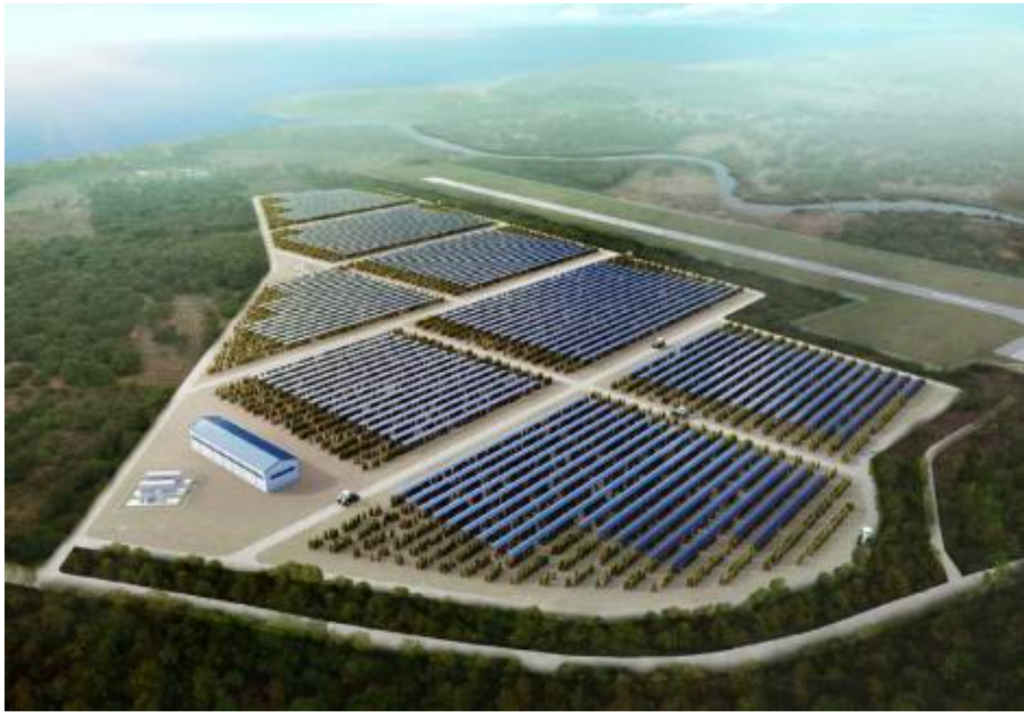
<Figure 2> Fiji 4MWp Agrivoltaic Project in Ovalau source: ENVELOPS CO., LTD.
This dual-use system has yielded multiple benefits. First, it created a new revenue stream for farmers, who could earn from both solar power generation and
their traditional farming practices. This added income is crucial in an era of fluctuating crop prices and economic uncertainty. Second, the project can increase agricultural productivity. The solar panels created a microclimate that provided shade, reduced evapotranspiration, and decreased water needs, thereby enhancing crop yields for certain crops. Finally, by generating renewable energy, the initiative contributes to the reduction of greenhouse gas emissions and promotes sustainable land use.
The second case is a 32kW Agrivoltaic Pilot in Da Lat University in Vietnam that is commissioned on the July 13th 2023. This project, though smaller in scale, is an important proof-of-concept for the viability of agrivoltaics in Vietnam. It will demonstrate that agrivoltaics can be successfully deployed in different geographical and climatic conditions, providing valuable local insights that could guide the implementation of similar projects in places like Ho Chi Minh City.
Key Points include:
Collaborative approach: Collaboration between farmers, agrivoltaic solution providers, and government entities is crucial. It helps ensure the benefits are shared by all stakeholders, increasing the likelihood of a project’s success.
Innovative design: The projects underscore the importance of design elements such as the height and arrangement of solar panels, which need to be optimized to local conditions to maximize both farming and energy generation.
Financial incentives: The additional income from solar power generation provided crucial motivation for farmers to adopt agrivoltaic systems, highlighting the role of financial incentives in promoting these systems.
Scalability: The success of the pilot project in Da Lat University can demonstrates that agrivoltaic solutions are scalable and adaptable to different contexts in Vietnam.
Conclusion
Ho Chi Minh City stands at a critical juncture in its growth trajectory. As the city rapidly urbanizes, it is increasingly confronted with the environmental and resource- related challenges that accompany such growth. To navigate these challenges, the city must embrace sustainable development strategies that promote green growth. Agrivoltaics, which ingeniously blends
agriculture and photovoltaics, emerges as a compelling solution with the potential to redefine the city’s future.
The geographical and climatic conditions of Ho Chi Minh City, coupled with its agricultural traditions, offer an ideal environment for the implementation of agrivoltaics. The city’s tropical climate and substantial solar irradiance levels provide a conducive setting for both agriculture and efficient photovoltaic energy generation.
The integration of agrivoltaics into Ho Chi Minh City’s green growth strategy can yield numerous benefits. By generating renewable energy, it reduces reliance on fossil fuels and helps mitigate greenhouse gas emissions. Its ability to conserve water and potentially enhance crop yields addresses food security concerns. Furthermore, it can stimulate rural development, boost farmers’ income, and lessen urban-rural disparities, presenting a holistic approach to sustainable growth.
Policy support is critical for the success of agrivoltaics. A supportive policy framework that encourages technological innovation, offers financial incentives, addresses regulatory barriers, and promotes public-private partnerships can greatly advance the adoption and scalability of agrivoltaics. Equally important is public education and awareness about the benefits of agrivoltaics, which can build public acceptance and foster a sense of ownership among local communities.
The case studies of ENVELOPS CO., LTD., a Korean start-up, further illustrate the potential and viability of agrivoltaics. The company’s projects in Fiji and Vietnam
can demonstrate the diverse benefits of agrivoltaics, including additional income for farmers, increased crop productivity, reduced greenhouse gas emissions, and efficient land use. These projects underscore the importance of collaboration, innovative design, financial incentives, and scalability in successful agrivoltaic implementation.
As Ho Chi Minh City charts its path towards sustainable development, agrivoltaics presents an innovative and promising solution. With the right strategies and policies in place, the city can harness the power of agrivoltaics to promote green growth, enhance energy efficiency, and improve resilience. This would not only contribute to the city’s sustainability goals but also set a valuable example for other urban centers grappling with similar challenges. The journey towards green growth is a challenging yet rewarding one, and with agrivoltaics, Ho Chi Minh City is poised to lead the way.
ABOUT THE AUTHORS
Sung Yoon: Chief Executive Officer, Envelops Co., Ltd., Seongdong-gu, Seoul, Republic of Korea
EIP Vietnam thực hiện mục tiêu tư vấn chuyển đổi KCN Sinh Thái và NetZero Carbon, Energy và phát triển bền vững ESG ở Việt Nam bằng cách kết nối với nhiều tổ chức môi trường quốc tế uy tín, những người khởi xướng toàn cầu về tính bền vững, hành động vì khí hậu, hệ sinh thái xanh và năng lượng tái tạo. EIP Vietnam thực hiện tư vấn theo khung EIP của UNIDO, Worldbank, GIZ.






